How to Prevent Blisters on a Long-Distance Walk
Worried about blisters on your long distance walk? Find out how to prevent blisters with our helpful tips and tricks.
How to Prevent Blisters on a Long-Distance Walk
https://www.contours.co.uk/blister-prevention
by Nicky Jaquiery
I’ve been going on long-distance walks now for over 30 years, and in that time I have rarely suffered with sore feet or blisters.
I know that I’m fortunate, especially as I don’t really do anything special in terms of preparing my feet for a walk. Perhaps with the passage of time and the many miles that I’ve walked, my feet have just become used to being in boots! Having said that, I do have some basic principles for blister prevention that I follow, which have become second nature and seem to work for me.
Before I begin, here’s my disclaimer: I can’t promise that when you next go out on a long walk your feet will remain blister-free! Some people, no matter what they do, still seem to develop blisters.
"I think the single most important thing you can do to avoid blisters is to buy a decent pair of boots that fit properly and are comfortable."
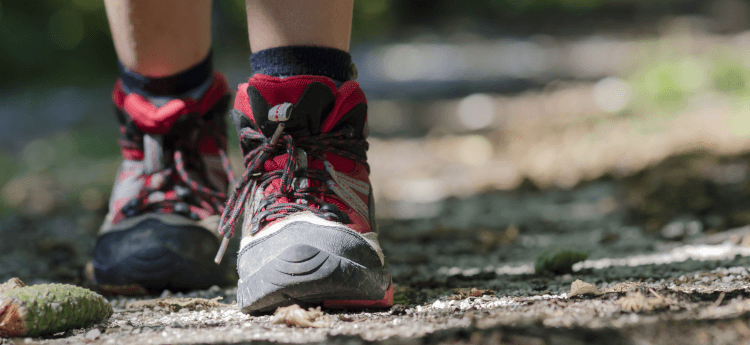
Unfortunately, this tends to mean you need to spend a reasonable amount of money! Good boots are not cheap, but if you take care of them they will last a long time.
I recommend going to an outdoor shop that has a specialist boot-fitting service, such as George Fisher’s in Keswick, Cumbria or Backcountry in Otley, West Yorkshire. Go later in the day rather than first thing in the morning, when your feet will have swollen.
A useful tip is to take along the socks that you’ll be wearing with your boots. Don’t rely on the socks that they give you in the shop, as they’re unlikely to fit your feet.
As part of the service, the assistant in the shop should show you how to lace your boots properly to secure your heels. Learn how to do this yourself to prevent your heels moving about and to reduce the risk of rubbing on your heels, one of the more common areas where blisters form.
Once you’ve decided on a pair of boots that seem to fit and feel comfortable, ask if you can take the boots home to wear around the house. A reputable outdoor shop should advise you to do this anyway and allow you to return the boots if you’re not satisfied, providing they’ve not been worn outside.
Wear your boots over several days, making sure you go up and down stairs. Although there is no guarantee that they’ll be comfortable once you’re out on a walk, this practice will weed out problem boots and give your feet the best possible chance of remaining blister-free.
"My next piece of advice is to buy decent socks and yes, you’ve guessed it: you need to be prepared to spend the money!"
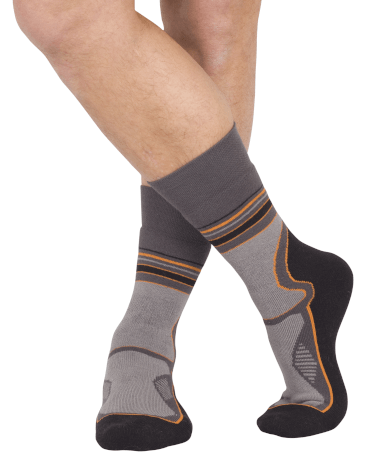
There is no point buying cheap socks. They’ll provide little protection and will wear out quickly, leaving your feet more vulnerable to blisters. Like your boots, if you invest your money in good socks you’ll reap the benefits for a long time.
I wear two pairs of socks, but I know that many people prefer to wear just one pair. At the end of the day, it comes down to personal preference, but whichever option you choose you should ensure your feet fit snugly inside your boots. This means there shouldn’t be too much or too little room.
I wear a thin inner pair of socks made of polypropylene and a thicker outer pair made of wool. Both pairs are designed specifically for walking and are made by Smartwool, although there are many other brands, for example Icebreaker and Bridgedale. Try on different brands to see which ones you feel most comfortable in.
The thin polypropylene socks will wick away moisture and also dry quickly, which is useful if you’re doing a multi-day walk when you want to wash them at the end of a day’s walk and ensure they’re dry for walking the next day. Look out for socks made of CoolMax fabric which do the same job.
Your outer socks will most likely have extra padding around the heel and toe area and also the ball of your foot, as these are the areas more susceptible to blisters. Socks should also have flat seams which will help to reduce rubbing.
Forget cotton socks! Just as with cotton clothing, cotton socks retain moisture – in this case the sweat from your feet – which can soften the skin and leave your feet more prone to blisters. Cotton socks also take a long time to dry.
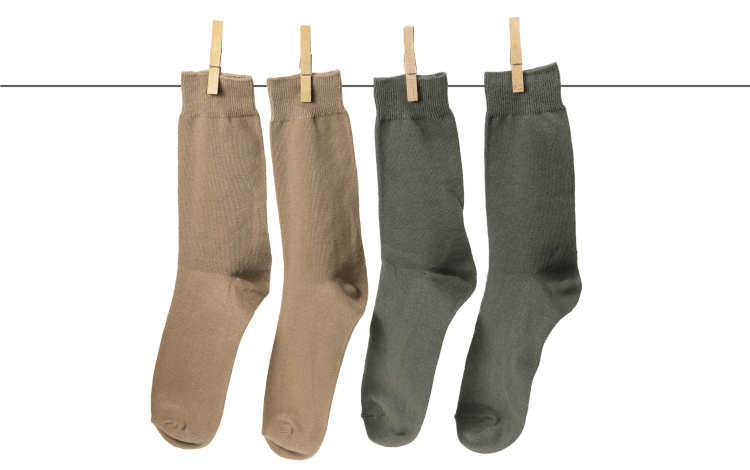
We’ve covered boots and socks, so what’s next? Before you venture, out you may want to consider a few further precautions for your feet.
Some people recommend toughening feet with surgical spirit and lubricating them to prevent rubbing. I don’t do either, but I do make sure that my toe nails are cut, and if I have any tender areas that I think may be prone to blisters, then I cover them with tape or specially designed plasters such as Compeed.
"Personally, I find the best way to harden and prepare your feet for walking is to walk!"
If you’re considering a long-distance, and in particular a multi-day walk, ideally you need to train for it. I would recommend that you start small with a couple of hours of walking, especially if your boots are new and you need to wear them in. Gradually build up the time on your feet with progressively longer walks.
Make sure to include plenty of café/pub stops to rest your feet. Hot and sweaty feet are the ideal conditions for blisters to form, so take your boots off and allow your feet to air and cool down whenever you can. If you’re likely to be getting your feet out in public, this is another incentive to make sure your toe nails are cut and your feet are in good condition!
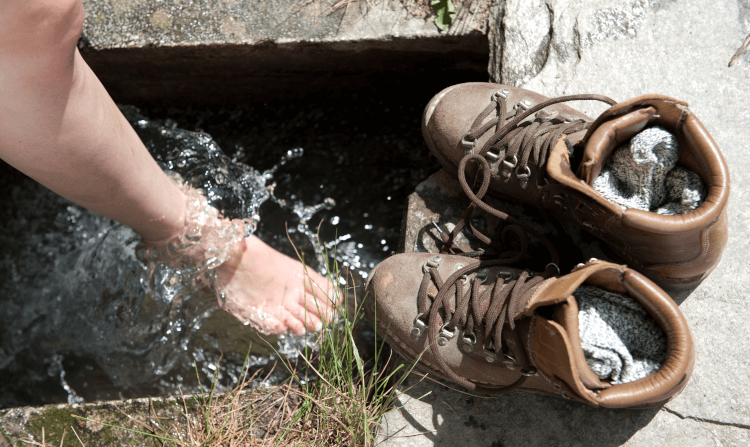
When you’re walking, stop and remove any grit or twigs that become trapped inside your boot. Don’t be tempted to keep going, even if you’re in a group and are worried about holding everyone else up. If you don’t remove debris immediately, at the very least it will cause discomfort and worse, it may lead to rubbing and blisters.
Lacing is critical to keeping your boot secure on your foot, too. Try out these boot-lacing techniques for long-distance walks to reduce friction and therefore blisters.
You may want to consider wearing gaiters to prevent debris falling into your boots, plus they help to keep water out of your boots if it’s raining. Wet boots usually result in wet socks and wet socks mean wet feet, another common cause of blisters.
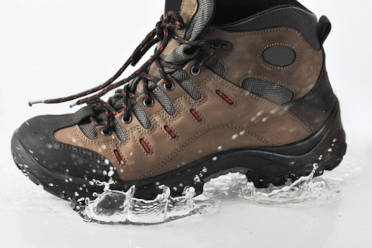
A sensible precaution to take against wet feet is to make sure your boots are waterproof. Of course, if your boots are new, this shouldn’t be necessary, but if you’ve had them some time it’s worth checking that they’re still waterproof.
The same principle applies as with waterproof jackets. If water ‘beads up’ on your boots then they are still waterproof; if it doesn’t, you need to apply a waterproofing treatment.
Following the advice above will help to reduce your chances of developing a blister when you’re walking. But, what do you do if you adopt the precautions above and you still get a blister? In my next article I’ll cover the treatment for blisters and some other common conditions/minor injuries that you may encounter on your walk.
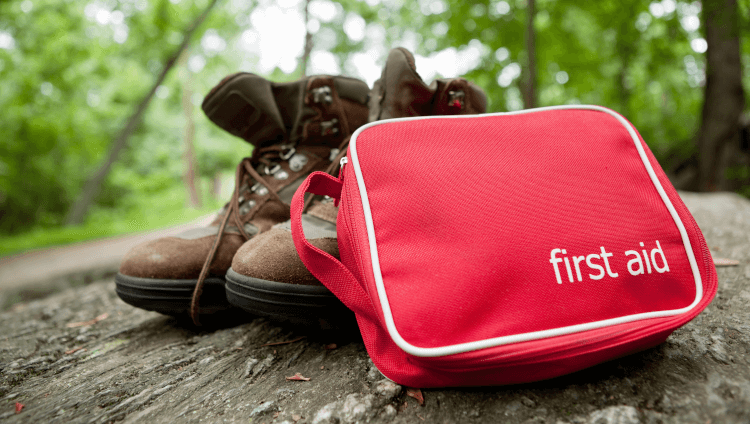
Outdoors Enthusiast
Nicky Jaquiery is a frequent contributor to the Contours Holidays blog, tapping into her vast experience out in the countryside as walker and runner to produce thoughtful and practical articles.